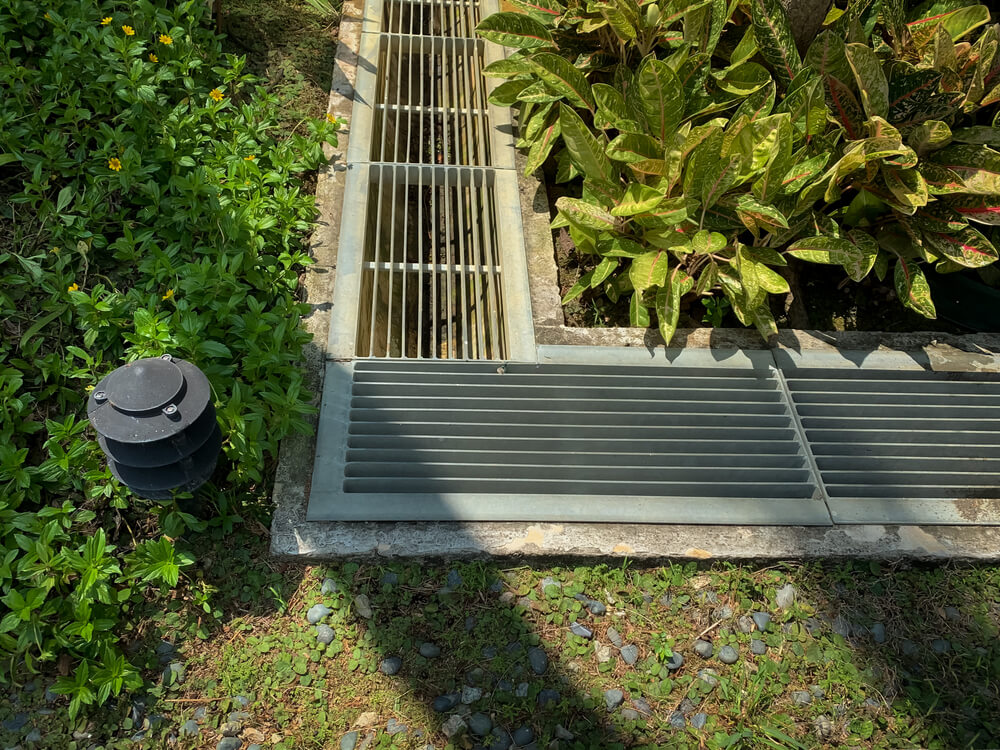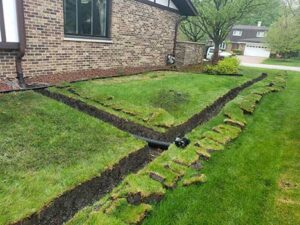When you think about landscaping, you might imagine lush gardens, neat lawns, and decorative elements that beautify a property. While these features certainly enhance the aesthetic appeal of a home, landscaping also plays a significant role in ensuring the functionality and longevity of a property. One key area where landscaping intersects with home maintenance is drainage plumbing. Proper drainage systems are essential for controlling water flow around your home and garden, preventing damage to both the landscape and the structure of your property. In this post, we’ll explore the essential connection between landscaping and drainage plumbing, how they work together, and why it’s crucial to maintain both aspects.

Understanding the Basics of Landscaping and Drainage Plumbing
Landscaping and drainage plumbing might seem like two separate areas of expertise, but they are deeply connected when it comes to the health and safety of a property. Landscaping involves the design and maintenance of a yard or garden, which can include features like planting beds, lawns, patios, and hardscaping. Drainage plumbing, on the other hand, deals with managing the flow of water and ensuring that it is directed away from the home and garden to prevent flooding and water damage.
In an ideal scenario, well-planned landscaping incorporates drainage solutions to control water runoff, channel water away from structures, and protect both the landscape and plumbing systems. Drainage plumbing systems, such as French drains, downspouts, and sump pumps, are often integrated into the landscaping design to ensure that water flows away from the house and does not pool in undesirable areas. Together, these systems form a harmonious balance that promotes healthy landscaping and prevents costly damage to a home’s foundation.
How Landscaping Affects Drainage
The way you design and maintain your landscape can significantly affect how water drains on your property. Landscaping features, such as slopes, soil types, and plant selection, all influence how water moves across the land. Properly graded lawns, for example, can direct rainwater away from the foundation of your house, which helps avoid water damage to both the structure and the surrounding landscape.
Poorly planned landscaping can create water retention issues that lead to flooding or soil erosion. For instance, an improperly graded yard may lead to water pooling near the foundation, leading to leaks in the basement or crawl spaces. Dense vegetation planted too close to drainage systems can obstruct water flow, while compacted soil reduces the ability of the ground to absorb water, increasing the risk of runoff.
Incorporating plants that are suitable for your region’s climate and soil conditions is also a crucial consideration. Native plants are typically the best choice, as they have adapted to the local environment and can manage water in a more sustainable way. Additionally, permeable hardscaping materials such as gravel or permeable pavers allow water to flow through rather than running off, further improving drainage.
Drainage Plumbing Systems in Landscaping
There are several key drainage systems commonly used in landscaping to manage water flow effectively. Let’s take a look at some of the most essential drainage solutions:
French Drains
French drains are an effective solution for redirecting water away from a yard or garden. They consist of a trench filled with gravel and a perforated pipe that collects and directs excess water. This system is often used to prevent water from pooling in areas that are prone to flooding.
Downspouts and Gutters
Properly maintained gutters and downspouts are essential to channel rainwater from the roof away from the foundation. Downspouts should be directed to a well-designed drainage system, such as a French drain, or away from the home entirely, ensuring that water does not collect near the foundation. Clogged gutters can result in water spilling over and causing damage to both the landscape and the home’s foundation.
Sump Pumps
In areas where water accumulation is a frequent issue, sump pumps are a valuable drainage solution. These pumps are typically installed in basements or crawl spaces to collect water and pump it away from the property. Sump pumps can also be used in conjunction with French drains to ensure that water is efficiently removed from the yard or home.
Swales and Dry Wells
Swales are shallow, sloped ditches designed to manage surface water runoff, while dry wells are underground structures used to collect and store excess water. Both systems can help prevent water from pooling and flooding certain areas, such as walkways, lawns, and garden beds. They are often used in conjunction with other drainage solutions to create a comprehensive system that promotes effective water management.
Landscaping Solutions to Improve Drainage
 There are various landscaping strategies that can enhance drainage and improve the overall health of your garden. These solutions often involve modifying the landscape to allow for better water movement and absorption.
There are various landscaping strategies that can enhance drainage and improve the overall health of your garden. These solutions often involve modifying the landscape to allow for better water movement and absorption.
Grading and Sloping
One of the most important aspects of landscaping for drainage is grading. Grading involves adjusting the slope of the land to ensure that water flows away from the house and other structures. Proper grading can prevent water from accumulating around the foundation, which can lead to basement flooding and other water-related damage. A slight slope away from the house (usually 1-2 inches for every 10 feet) ensures that water moves away from the property rather than pooling near it.
Soil Aeration
Aerating the soil is another effective way to improve drainage in a landscaped area. By creating small holes in the soil, aeration helps water penetrate deeper into the ground, rather than running off. This is especially helpful in clay-heavy soils, which tend to retain water and become compacted. Aeration can be done with manual tools or a mechanical aerator.
Adding Permeable Surfaces
Incorporating permeable materials into your landscaping design is a great way to improve drainage. Permeable pavers, gravel, and other materials allow water to pass through the surface and be absorbed into the ground, reducing surface runoff. This is especially useful in driveways, walkways, and patios, where traditional non-permeable materials can contribute to drainage issues.
Choosing the Right Plants
Choosing the right plants for your landscaping can help improve drainage by absorbing excess water. Native plants are often the best option, as they are naturally suited to the local environment and can manage water more efficiently. Additionally, plants with deep root systems can help water infiltrate the ground, preventing surface runoff and erosion.